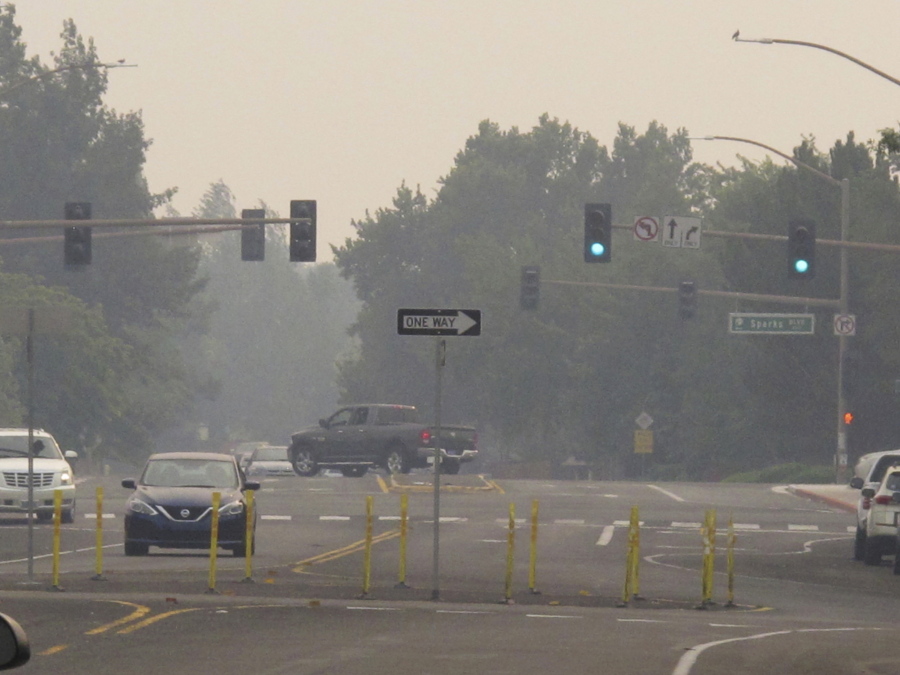SOUTH LAKE TAHOE, Calif. — An army of firefighters worked Tuesday to try to keep a huge wildfire from pushing toward Lake Tahoe, the blue alpine lake surrounded by resort communities straddling the California-Nevada state line.
The Caldor Fire, growing explosively at times, has scorched about 184 square miles (476 square kilometers) and destroyed at least 455 homes since breaking out Aug. 14 in the Sierra Nevada southwest of Lake Tahoe.
Just 9% contained and a threat to more than 17,000 structures, the Caldor Fire has become the nation’s No. 1 priority for firefighting resources, Chief Thom Porter, director of the California Department of Forestry and Fire Protection, said during a briefing Monday.
“It is knocking on the door to the Lake Tahoe basin,” he said. “We have all efforts in place to keep it out of the basin, but we do need to also be aware that is a possibility based on the way the fires have been burning.”
Porter said he personally did not believe the fire would get into the basin but added he could be proved wrong, given the extraordinary behavior of current fires, such as the 1,142-square-mile (2,958-square-kilometer) Dixie Fire to the north in the Sierra-Cascades region.
“Mother Nature has taken over and taken fires like the Dixie to places that I never thought was possible,” he said.
The Dixie Fire, burning for more than a month, was 41% contained after destroying at least 1,262 buildings, including 679 homes.
For the second day in a row, smoke from California’s massive fires kept schools closed in the Reno area of northern Nevada, affecting 67,000 students.
Overall, more than 14,000 firefighters were battling a dozen major wildfires in California on Tuesday, according to Cal Fire.
Nationally, 92 large fires were burning in a dozen states, according to the National Interagency Fire Center, in Boise, Idaho.
Climate change has made the West warmer and drier in the past 30 years and will continue to make the weather more extreme and wildfires more destructive, according to scientists.



